#Four Ancient Tombs Unearthed In China
Text
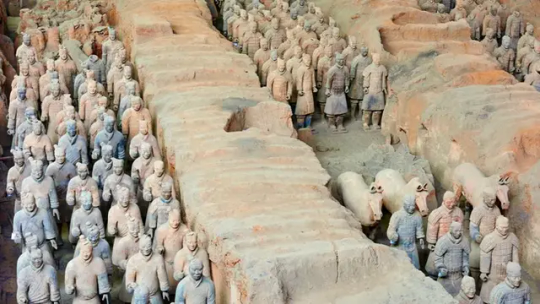

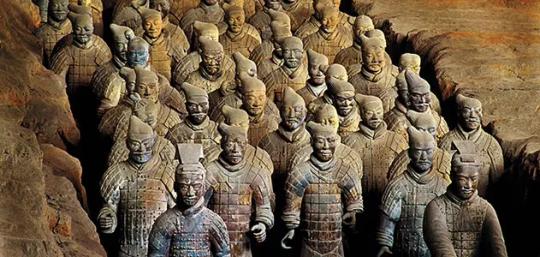
A Rare 2,000-Year-Old Sheep-Drawn Chariot Discovered Near China’s First Emperor
Only the sheep's skeletons remain, but such vehicles appear in Chinese lore.
Archaeologists have discovered the remains of what appears to be an ancient sheep-drawn chariot near the famous "Terracotta Army" in northwestern China.
The English-language website China Daily, which is owned by the Chinese Communist Party, reported that the remains were found in the "western tomb" at the site of Emperor Qin Shi Huang's mausoleum, a few miles northeast of the city of Xi'an in Shaanxi province.
Archaeologist Jiang Wenxiao, who is leading the excavations of the tomb, told China Daily that the main structure of the chariot had rotted away after spending more than 2,000 years in the ground. (The mausoleum dates to the third century B.C.)
But the team did find a row of six sheep skeletons wearing accessories used for pulling a chariot, so they inferred this was a sheep-drawn chariot, Wenxiao said.
Drawn by sheep

Horse-drawn chariots and ox-drawn carts were common in ancient China, but a sheep-drawn chariot is an extremely rare find, Wenxiao said.
They appear in Chinese history, however, as well as in Chinese lore. The founder of the Western Jin dynasty, Emperor Wu (or Sima Yan), who ruled from A.D. 266 to 290, is said to have ridden in a sheep-drawn carriage around his palace complex every night and would sleep wherever the sheep stopped.
His practice may be the origin of the modern Chinese phrase "seeking luck in a sheep cart"; it's said the emperor had a harem of 10,000 wives, and this seems to have been Sima Yan's method of choosing among them.
Wenxiao presented the discoveries at the Fourth Congress of Chinese Archaeology, which was held in Xi'an in October, according to the state-owned website ECNS.cn.
The team hopes laboratory analysis on the western tomb's burial chamber, which is currently underway, will help them determine who was buried there, the report said.
Chinese chariots
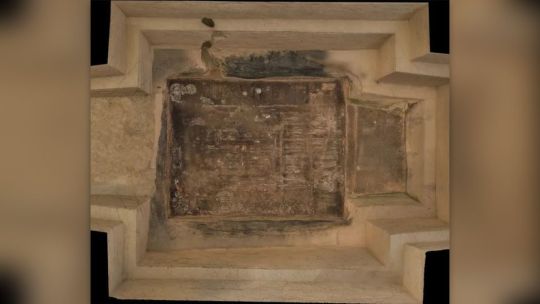
In addition to the six-sheep chariot, archaeologists unearthed a four-wheeled wooden chariot, presumably drawn by horses, equipped with an ornate rectangular umbrella. It is the oldest of its type ever found, according to Wenxiao.
They also found a wealth of copper chariot and horse-related artifacts, as well as iron tools and copper weapons, providing new insight into the period when iron tools first began to appear.
The mausoleum of Emperor Qin Shi Huang, who ruled from 221 to 210 B.C. and is considered the first emperor of a united China, is spread over about 10 square miles (26 square kilometers) and took 38 years to complete. Three immense pits in the mausoleum site hold more than 8,000 life-sized sculptures that depict the emperor's soldiers and their horses — the so-called Terracotta Army.
By Tom Metcalfe.
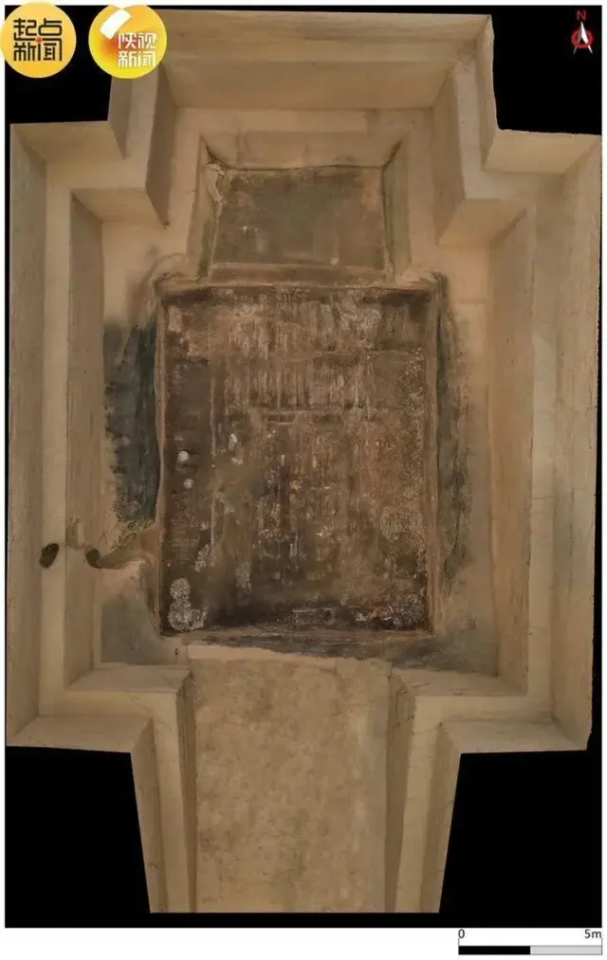


#A Rare 2000-Year-Old Sheep-Drawn Chariot Discovered Near China’s First Emperor#Terracotta Army#Emperor Qin Shi Huang#Qin dynasty#Xi'an Ciina#Shaanxi province#chariot#ancient tomb#ancient grave#ancient artifacts#archeology#archeolgst#history#history news#ancient history#ancient culture#ancient civilizations#ancient china#chinese history
46 notes
·
View notes
Text
This Lunar New Year Is the Year of the Dragon: Why the Beast Is a Big Deal in Chinese Culture
— By Chad De Guzman | Wednesday February 6, 2024 | Time Magazine
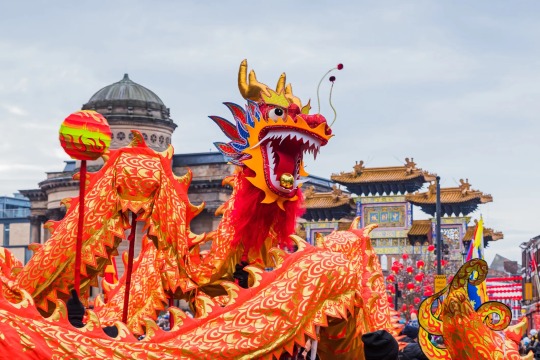
A traditional Chinese New Year dragon dance is performed in Liverpool’s Chinatown in January 2023.Getty Images
The last time China’s birth rates peaked was in 2012: that year, for every 1,000 people, there were 15 live births, a far cry from 2023’s 6.39. It was a statistical anomaly, considering the country’s ongoing state of demographic decline, which has proven extremely difficult to reverse. But 2024 may just see another baby boom for China, for the same reason as 12 years ago: it’s a Year of the Dragon.
Dragons are a big deal in Chinese culture. Whereas in the West dragons are often depicted as winged, fire-breathing monsters, the Chinese dragon, or the loong, is a symbol of strength and magnanimity. The mythical being is so revered that it snagged a spot as the only fictional creature in the Chinese Zodiac’s divine roster. And the imagery pervades society today—whether in boats, dances, or the stars.
International discourse about China’s economy or politics also often references the country as a “red dragon,” which critics have said subconsciously panders to Orientalism and fears of communism. But many Chinese proudly embrace the connection: China’s President Xi Jinping told former President Donald Trump in 2017 that the Chinese people are black-haired, yellow-skinned “descendants of the dragon.”
That’s why, in Years of the Dragon (which happen every 12 years), spikes in births tend to occur in China (as well as other countries with large Chinese populations, such as Singapore), as many aspiring parents try to time their pregnancies to result in a child born with the beast’s positive superstitious associations.
A Symbol of Prosperity
Where the Chinese dragon first came from is still debated by historians and archaeologists. But one of the most ancient images of the loong was unearthed in a tomb in 1987 in Puyang, Henan: a two-meter-long statue dating back to the Neolithic civilization of Yangshao Culture some 5,000–7,500 years ago. Meanwhile, Hongshan Culture’s Jade Dragon—a C-shaped carving with a snout, mane, and thin eyes—could be traced back to Inner Mongolia five millennia back.
Marco Meccarelli, an art historian at the University of Macerata in Italy, writes that there are four reliable theories for how the loong came to be: first, a deified snake whose anatomy is a collage of other worldly animals (based upon how, as ancient Chinese tribes merged, so did the animal totems that represent them); second, a callback to the Chinese alligator; third, a reference to thunder and a harbinger of rain; and lastly, as a by-product of nature worship.
Most of these theories point to the dragon’s supposed influence on water, because they are believed to be gods of the element, and thus, agricultural numen for a bountiful harvest. Some academics have said that across regions, ancient Chinese groups continued to enrich the dragon image with features of animals most familiar to them—for example, those living near the Liaohe River in northeast China integrated the hog into the dragon image, while people in central China added the cow, and up north where Shanxi is now, earlier residents mixed the dragon’s features with those of the snake.
A Symbol of Power
Nothing cemented the Chinese dragon’s might better than when it became a symbol of the empire. The mythical Yellow Emperor, a legendary sovereign, is said to have been fetched by a Chinese dragon to head to the afterlife. The loong are also said to have literally fathered emperors, or at least that’s what Liu Bang, the first emperor of the Han dynasty (202-195 B.C.), made his subjects believe: that he was born after his mother consorted with a Chinese dragon.
“The dragon totem and its corresponding clout were employed as a political tool for wielding power in imperial China,” Xiaohuan Zhao, associate professor of Chinese literary and theater Studies at the University of Sydney, tells TIME.
From then on, the loong was a recurrent theme across dynasties. The seat of the emperor was called the Dragon Throne, and every emperor was called “the true Dragon as the Son of Heaven.” D. C. Zhang, a researcher in the Institute of Oriental Studies at the Slovak Academy of Sciences in Bratislava, tells TIME that later dynasties even prohibited commoners from using any Chinese dragon motif on their clothes if they weren’t part of the imperial family.
The Qing Dynasty (1644-1912) created the first iteration of a Chinese national flag featuring a dragon with a red pearl, which was to be hung on Navy ships. But as the Qing Dynasty weakened after several notable military losses, including the First Sino-Japanese War (1894-1895) and Boxer Rebellion of 1900, caricatures of the dragon began to be used as a form to protest against the government for its weakness, says Zhang. But with the dynasty’s fall after the establishment of the Republic of China (ROC)—which would then become Taiwan—in 1912, Zhang says the pursuit of a national emblem was temporarily cast aside.
During the Second Sino-Japanese War (1937-1945), there had been renewed calls to find a unifying symbol to boost morale, and the dragon was among several animals considered. But when Mao Zedong established the People’s Republic of China (PRC) in 1949, the quest for a unifying symbol for the Chinese was forgotten again, as the country pivoted priorities toward rapid industrial development.
A Symbol of Unity
Outside China, the dragon motif may have quickly caught on, but inside it, the dragon was not as influential until the 1980s, says Zhang. In 1978, Taiwanese musician Hou Dejian composed a song entitled “Heirs of the Dragon” as a means to express frustration over the U.S.’s decision to recognize the PRC as China’s legitimate government and sever diplomatic ties with the ROC (Taiwan). Lee Chien-fu, a Taiwanese student at the time, released a cover of the song in 1980 that grew immensely popular on the island.
Despite being a song decrying Taiwan’s disappointment, the song managed to cross the strait and also resonated with citizens of the mainland. Zhang says “China was becoming stronger” and its government tried to co-opt “Heirs of the Dragon” as it needed an emblem for unification and prosperity “which would be apolitical and would be inclusive to all Chinese nations even for those living abroad.” Hou, who had since moved to China, sang the song in a Chinese state variety show to usher in the Year of the Dragon in 1988.
But the song’s popularity also led it to be used against the Chinese leadership. Dissidents turned “Heirs of the Dragon” back into a protest anthem before the 1989 Tiananmen Square crackdown, according to the South China Morning Post, with Hou even changing some of the lyrics according to Zhang. Hou was deported back to Taiwan in 1990, but his music stayed with the ethnically Chinese and the Chinese diaspora, Zhang says.
The song as well as China’s overt efforts to create a national symbol that transcends borders, Zhang says, play a large part in the lasting cultural significance of the loong. And the dragon’s historic regality has certainly helped boost the mythos, symbolism, and popular sentimental attachment for Chinese people today, says University of Sydney’s Zhao. “The basic characteristics, features, beliefs and practices associated with dragon totem and clout remain largely unchanged,” he says. “It’s very much a living tradition.”
#China 🇨🇳#Chinese Culture#Chinese Symbolism#Chinese Dragon 🐉 Symbolism#Lunar Year#Year of Dragon 🐉#Beast#Big Deal#Chad De Guzman#Time Magazine#Chinatown#Symbol of Prosperity | Power | Unity
2 notes
·
View notes
Text
Ancient Chinese relics
Four-ram Zun
Early bronzes of the late Shang Dynasty. It belongs to ritual utensils and sacrificial items.
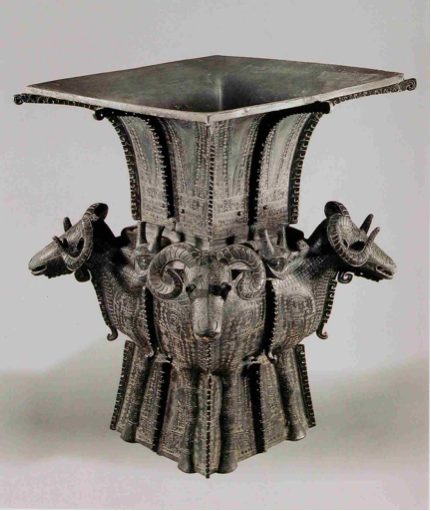
Terracotta
Terracotta Army (Terracotta Army; Terra-cotta Figures; Soldier and Horse figures) is a category of ancient tomb sculpture. In ancient times, human martyrdom was practiced, and the slave was an accessory of the slave owner during his lifetime, and the slave had to be buried for the slave owner after the death of the slave owner, which was a funeral object. Terracotta warriors and horses are funerary objects made in the shape of terracotta horses (chariots, war horses, soldiers).

Yuan blue and white Guiguzi descending the mountain picture jar
The blue and white pattern is painted with imported cobalt material, which is divided into four layers, the first layer of the neck is decorated with water ripples, the second layer of the shoulder is decorated with entwined branch peonies, the third layer of the abdomen is the theme of "Guiguzi descending the mountain", and the lower part of the fourth layer is the deformed lotus petal pattern painted with Chenbao, commonly known as "eight big yards". The theme picture depicts the story of Sun Bin's master Guiguzi, who agreed to go down the mountain to rescue Sun Bin and Dugu Chen, the famous generals of Qi who were trapped by Yan State, at the repeated request of Su Dai, the envoy of Qi State.

Sanxingdui Ruins Official
It has a history of 3,000 to 5,000 years, and is the ancient city, ancient country and ancient Shu cultural site with the largest range, longest duration and richest cultural connotation found in southwest China so far. The best-preserved eastern, western, and southern city walls and the inner city walls of Moon Bay. The Sanxingdui site is known as one of the greatest archaeological discoveries of mankind in the 20th century, showing that the Yangtze River Basin, like the Yellow River Basin, belongs to the mother of Chinese civilization and is known as the "source of Yangtze River civilization".

The history of the excavation of the Sanxingdui Ruins Official
The astonishing discovery of the Sanxingdui site began with a pit of jade tools that local farmer Yan Daocheng accidentally discovered in 1929 when he was driving water and digging a ditch. In the spring of 1931, the British missionary V· H· When Donnithorne heard the news, he approached the local garrison to help publicize the protection and investigation, and handed over the collected jade artifacts to the West China University Museum run by the Americans for safekeeping. According to V· H· In the spring of 1934, David C. Graham, director of the West China University Museum, and assistant Lin Mingjun formed an archaeological team, presided over by Luo Yucang, the magistrate of Guanghan County, to conduct a ten-day excavation near the discovery of jade artifacts in the Yan family. The excavation was rich in harvests, and according to these materials, V·H· Donnithorne compiled the "Hanzhou Excavation Briefing". Since the first excavation of the Sanxingdui site in 1934, the excavation has been stagnant for a long time.




In 1929, the discovery of the Sanxingdui Ruins Official began with a pit of jade tools that local farmer Yan Daocheng accidentally found when he was digging gou.
From 1980 to 1981, the remains of Neolithic houses were cleaned up, and tens of thousands of specimens were unearthed, from which the "Sanxingdui Ruins Official" got its name.
In 1982 and 1984, archaeologists carried out two excavations in the southwest and Xiquankan of the Sanxingdui Ruins Official, respectively, and found the remains of the latest Sanxingdui site.
In July 1986, two major sacrificial pits in Sanxingdui were unearthed one after another, and a large number of unique and exquisite cultural relics attracted the attention of academic circles at home and abroad to the ancient Shu civilization in southwest China.
In 1988, the State Council separately organized a review of the Sanxingdui Ruins Official, and it was announced as a national key cultural relics protection unit that year.
From 1989 to 1995, Sanxingdui workstation has carried out test excavation of the "mound" outside Sanxingdui for 6 times, clarified the nature of its artificially built city wall, and delineated the scope of the ancient city of Sanxingdui with an area of 3.6 square kilometers.
In 1992, the foundation stone of Sanxingdui Museum was laid.
In May 1993, Sanxingdui Ruins Official relics were exhibited at the Olympic Museum in Lausanne, Switzerland. Although there is only one piece, it has caused a lot of repercussions in Switzerland and Europe. After that, European countries frequently invited Sanxingdui treasures to be exhibited in Europe.
In 1997, Sanxingdui Museum was completed and opened, and its basic exhibition won the top ten exhibitions of national museums that year.
In 2002, the Sanxingdui unearthed cultural relics bronze sacred tree and Yubianzhang were included in the "Catalogue of the First Batch of Cultural Relics Prohibited from Going Abroad (Territory) Exhibition" issued by the State Administration of Cultural Heritage.
From 2012 to 2015, Sanxingdui archaeology discovered the foundation site of large houses in Qingguanshan and important cultural relics of many sections of the city wall, and the ancient city wall of Sanxingdui was enclosed.
In April 2019, Sichuan issued the "Implementation Opinions on Strengthening the Reform of the Protection and Utilization of Cultural Relics", and the joint application of Sanxingdui and Jinsha sites as a World Heritage Site became a highlight.
On March 20, 2021, more than 500 important cultural relics have been unearthed in the six "sacrificial pits" newly discovered in the archaeological work of the Sanxingdui site, of which ivory was found in three pits. On March 21, the Sanxingdui archaeological "new" continued, and a ivory weighing more than 100 catties in the No. 4 pit was completely extracted; On April 12, a complete round-mouth square statue was successfully extracted from the No. 3 pit of Sanxingdui site, which is also the first complete round-mouth square statue unearthed by scientific archaeological excavation.
On May 28, 2021, the Sichuan Provincial Institute of Cultural Relics and Archaeology announced that the excavation of 6 newly discovered "sacrificial pits" in Sanxingdui has yielded a lot of harvests. In addition, the Sanxingdui site will be declared a world cultural heritage in conjunction with the Jinsha site, and the Sanxingdui National Heritage Park will be accelerated.
1 note
·
View note
Text
Centuries-old painted lacquer coffin unearthed in China
GUIYANG -- Archaeologists have excavated a lacquer coffin with colored paintings in southwest China's Guizhou Province, which is the best-ever preserved from the Ming Dynasty (1368-1644).
The coffin was found in one of the three Ming tombs by the Feilian Lake in Weng'an County. According to experts with the provincial cultural relics and archaeology research institute, the tomb was built in 1581, the ruling period of Emperor Wanli.
It bears exquisite designs of the "Four Mythical Creatures" in ancient China -- the Azure Dragon, the White Tiger, the Vermillion Bird and the Black Turtle. Other paintings include phoenixes, bonsai and red-crowned cranes. Read more.
117 notes
·
View notes
Text
Ginfaxi: A Norse-Germanic Swastika Hypothesis

In this post I will put forth a hypothesis on the stave Ginfaxi. In short, I’ve come to believe that this symbol is more than just a “ good luck stave for Icelandic wrestling (glíma) ” specifically and is actually a Norse-Germanic variant of the swastika that has been misrepresented in current times.
I will not be going into comparative details about all of the world swastika designs, a quick Google search on ‘world swastikas’ will do that for you. You will see that this ancient four-legged revolving symbol is so widespread on a global scale that it is impossible to ignore:

Image link
Glíma and Luck
As far as I can tell, Ginfaxi (pronounced Gin- i.e. Beginning or Gín- i.e. bee) has only one common description nowadays. On the Wikipedia article about ‘Icelandic Magical Staves’ you will see two symbols described as being used in the Icelandic wrestling act of glíma; Gapaldur and Ginfaxi.
“ Two staves, kept in the shoes, gapaldur under the heel of the right foot and ginfaxi under the toes of the left foot, to magically ensure victory in bouts of Icelandic wrestling (glíma). ”
Using luck symbols during most anything is commonplace. And using it under the feet while participating in something like wrestling, where footwork is key, is logical. As a side note, the Buddha is sometimes depicted as having swastikas under his toes as well.
I think the stave being used to give luck in glíma might be correct, just how the swastika represents good luck in most other cultures, but I don’t believe that this is it’s original origin.
Etymology and Comet Tail
The comparative etymology that led me to changing my perspective on Ginfaxi were the names Gullfaxi, Hrimfaxi and Skinfaxi. All of these are horse characters that have their faxi, i.e. manes, in their name to describe them.
Gullfaxi = Golden Mane, Hrimfaxi = Frost Mane (The horse that pulls the moon), Skinfaxi = Bright Mane (The horse that pulls the sun).
I haven’t yet found any textual lead as to what the ‘Gin-’ portion of the name might mean, but the second ‘-faxi’ is obviously ‘mane’. Which leads me to the hypothesis of a comet. An excerpt from Wikipedia explains the following:
Carl Sagan in his book Comet (1985) reproduces a Han-dynasty Chinese manuscript (the Book of Silk, 2nd century BCE) that shows comet tail varieties: most are variations on simple comet tails, but the last shows the comet nucleus with four bent arms extending from it, recalling a swastika. Sagan suggests that in antiquity a comet could have approached so close to Earth that the jets of gas streaming from it, bent by the comet's rotation, became visible, leading to the adoption of the swastika as a symbol across the world.
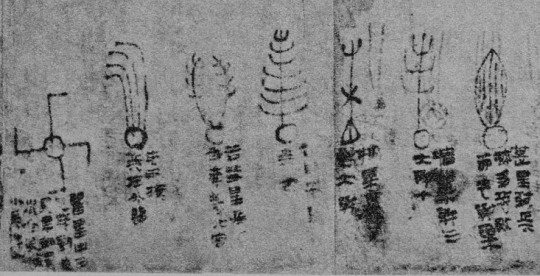
* Detail of Astrology Manuscript, ink on silk, BCE 2th century, Han, unearthed from Mawangdui tomb 3rd, Chansha, Hunan Province, China. *
In this context one could see how this symbol is given a -faxi name as the comet tails could represent the waving manes of a horse. In a comparative sense to Skinfaxi (Shining Mane), Gin- could possibly mean Light- or Bright-, concluding the derivative meaning as Light Mane or Bright Mane, describing the light emmiting from the comet.
You have to think of the rarity of a comet flying through the sky and making this exact shape, even though it must’ve been very impactfull in ancient times. I do think it is a possible explanation, but I'd argue there’s a better and more continuously visible one: Ursa Major
The Big Dipper and the North Star
It is a known astronomical fact that The Big Dipper (Ursa Major) continuously revolves around the North Star (Polaris). When visually sequenced with the seasons it gives the origin of the swastika shape:

The sky has always been there and people have been viewing it for thousands upon thousands of years. There is little doubt in my mind that this is not the catalyst for the four-legged swastika symbol.
Modern usage and Stigma
I will make this brief. Just because someone uses a symbol does not mean they fully know and understand the origins of it and/or what it stands for. Same as when people attribute evil to a symbol that has been tattered in very recent history does not change the ancient meaning of it. We cannot accept ignorance to overrule truth. Open your eyes, view without blindness and think for yourself.
Conclusion
I think we should start seeing and using Ginfaxi as an ancient astronomical symbol that depicts the seasons and therefore life itself.
Let go of the stigma that keeps feeding poison to us and the symbols. Let go of the notions of people who refuse to let go of the recent past. Strike down the ignorance that takes everything at face value. The swastika is a tremendously ancient and well-spirited symbol and it should be recognized as such.
Extra references
Find the Dipper and the North Star - http://www.physics.ucla.edu/~huffman/finddip.html
Live Encounters “Who’s Swastika is it Anyway?” - https://liveencounters.net/2013-2/08-august-2013/whose-swastika-is-it-anway/
The Big Dipper | 4 Heavenly Beasts | Swastika/Manji - https://www.youtube.com/watch?v=agX-Rkuvn6s
#asatru#astronomy#ginfaxi#rune#runes#magic stave#elder futhark runes#futhark#futhark runes#norse myth#norse mythology#thor#odin#icelandic magical staves#ginfaxi stave#viskumal#icelandic spells#vikings#viking
22 notes
·
View notes
Text
Where Did The Word Gambling Originate
» History
Where did Covid-19 come from? What we know about its origins. This article is more than 7 months old. Scientists cast doubt on the Trump-backed theory that the coronavirus escaped from a Chinese lab. The online etymology dictionary is the internet's go-to source for quick and reliable accounts of the origin and history of English words, phrases, and idioms. It is professional enough to satisfy academic standards, but accessible enough to be used by anyone. The site has become a favorite resource of teachers of reading, spelling, and English as a second language. Gambling was used to settle disputes or reveal ‘gods’ answers to questions. In China we have the game of keno, which is played with cards with numbers from 1 to 80 in squares. You were allowed to circle a set of number and then a lottery would take place (like in the lotto today) to identify the ‘lucky’ numbers.
The history of humanity is inextricably linked with the history of gambling, as it seems that no matter how far back in time you go there are signs that where groups of people gathered together gambling was sure to have been taking place. Now we are not going to attempt to track every single twist and turn in the evolution of gambling in this article, but what we are going to do is to pick out some of the most important dates to act as milestones on the road to today’s gambling experience.
The word punter has interesting (and disputed origins). In the sense of a 'gambler' or 'player of a game of chance' it is traced back to 1706, refering to a style of play in a card game (betting.

The Earliest Evidence of Gambling
While it is almost certain that some forms of betting have been taking place since the dawn of human history, the earliest concrete evidence comes from Ancient China where tiles were unearthed which appeared to have been used for a rudimentary game of chance. The Chinese ‘Book of Songs’ makes reference to “the drawing of wood” which suggests that the tiles may have formed part of a lottery type game. We have evidence in the form of keno slips which were used in about 200bc as some sort of lottery to fund state works – possibly including construction of the Great Wall of China. Lotteries continued to be used for civic purposes throughout history – Harvard and Yale were both established using lottery funds – and continue to do so until the present day.
Dicing with the Law on the Streets of Ancient Rome

The Greek poet Sophocles claimed that dice were invented by a mythological hero during the siege of Troy, and while this may have somewhat dubious basis in fact, his writings around 500bc were the first mention of dice in Greek history. We know that dice existed far earlier than this, since a pair had been uncovered from an Egyptian tomb from 3000bc, but what is certain is that the Ancient Greeks and Romans loved to gamble on all manner of things, seemingly at any given opportunity. In fact all forms of gambling – including dice games – were forbidden within the ancient city of Rome and a penalty imposed on those caught which was worth four times the stake being bet. As a result of this, ingenious Roman citizens invented the first gambling chips, so if they were nabbed by the guards they could claim to be playing only for chips and not for real money. (Note that this ruse will not work if attempted at a Vegas casino).
Playing your Cards Right in China
Most scholars agree that the first playing cards appeared in China in the 9th century, although the exact rules of the games they were used for have been lost to history. Some suggest that the cards were both the game and the stake, like trading card games played by children today, while other sources believe the first packs of cards to have been paper forms of Chinese domino. Certainly the cards used at this time bore very little relation to the standard 52 card decks we know today.
Baccarat in Italy and France
The earliest game still played in casinos today is the two player card game of Baccarat, a version of which was first mentioned as long ago as the 1400s when it migrated from Italy to France. Despite its early genesis, it took hundreds of years and various evolutions to arrive at the game we know today. Although different incarnations of the game have come and gone, the standard version played in casinos all over the world came from Cuba via Britain to the US, with a few alterations to the rules along the way. Although baccarat is effectively more of a spectator sport than a game, it is a feature of just about every casino due to its popularity with high rolling gamblers.
Blackjack through the Ages
Some suggest that the earliest forms of blackjack came from a Spanish game called ventiuna (21) as this game appeared in a book written by the author of Don Quixote in 1601. Or was it the game of trente-un (31) from 1570? Or even quinze (15) from France decades earlier? As with all of these origin stories, the inventors of games of chance were rarely noted in the historical annals. The French game of vingt-et-un in the seventeenth century is certainly a direct forefather of the modern game, and this is the game that arrived in the US along with early settlers from France. The name ‘blackjack’ was an American innovation, and linked to special promotions in Nevada casinos in the 1930s. To attract extra customers, 10 to 1 odds were paid out if the player won with a black Jack of Clubs or Spades together with an Ace of Spades. The special odds didn’t last long, but the name is still with us today.
First Casinos in Italy
The earliest gambling houses which could reasonably be compared to casinos started to appear in the early 17th century in Italy. For example, in 1638, the Ridotto was established in Venice to provide a controlled gambling environment amidst the chaos of the annual carnival season. Casinos started to spring up all over continental Europe during the 19th century, while at the same time in the US much more informal gambling houses were in vogue. In fact steam boats taking prosperous farmers and traders up and down the Mississippi provided the venue for a lot of informal gambling stateside. Now when we think of casinos we tend to picture the Las Vegas Strip, which grew out of the ashes of the Depression in America.
The Little Wheel in Paris
Roulette as we know it today originated in the gaming houses of Paris, where players would have been familiar with the wheel we now refer to (ironically enough) as the American Roulette wheel. It took another 50 years until the ‘European’ version came along with just one green zero, and generations of roulette players can be grateful for that. During the course of the 19th century roulette grew in popularity, and when the famous Monte Carlo casino adopted the single zero form of the game this spread throughout Europe and most of the world, although the Americans stuck to the original double zero wheels.
Poker: Bust to Boom
It’s hard to pin down the precise origin of poker – as with a lot of the games mentioned here, poker seems to have grown organically over decades and possibly centuries from various different card games. Some have poker’s antecedents coming from seventeenth century Persia, while others say that the game we know today was inspired by a French game called Poque. What we do know for sure is that an English actor by the name of Joseph Crowell reported that a recognizable form of the game was being played in New Orleans in 1829, so that is as good a date as any for the birth of poker. The growth of the game’s popularity was fairly sluggish up until world poker tournaments started being played in Vegas in the 1970s. However poker really exploded with the advent of online poker and televised events allowing spectators to see the players’ hands. When amateur player Chris Moneymaker qualified for and won the 2003 world poker championship after qualifying through online play, it allowed everyone to picture themselves as online poker millionaires.
One Armed Bandits Appear in New York
The first gambling machine which resembled the slots we know today was one developed by Messrs Sittman and Pitt in New York, which used the 52 cards on drum reels to make a sort of poker game. Around the same time the Liberty Bell machine was invented by a Charles Fey in San Francisco. This machine proved much more practical in the sense that winnings could be precisely regulated, and marked the beginning of the real slot game revolution. The fact that some new video slot games still feature bell symbols dates back to this early invention. While early machines spewed out cigars and gum instead of money, the money dispensing versions soon became a staple in bars and casinos around the globe, and when the first video slot was invented in 1976 this paved the way for the online video slots which were to follow.
Gambling in the US: Two Sides of the Same Coin
The United States has always had an up and down relationship with gambling, dating back to when the very first European settlers arrived. Whereas Puritan bands of settlers banned gambling outright in their new settlements, those emigrating from England had a more lenient view of gambling and were more than happy to tolerate it. This dichotomous relationship has continued until now, and in 1910 public pressure led to a nationwide prohibition on gambling. Just like the alcohol prohibition of the same era, this proved somewhat difficult to enforce and gambling continued on in an only slightly discreet manner. The Wall Street Crash and the Great Depression that this spawned in the early 1930s led to gambling being legalized again, as for many this was the only prospect of alleviating the grinding poverty which they suffered through. Although gambling is legal in a number of States today –most famously in Las Vegas, Nevada - online gambling is still something of a grey area in the United States. Right now, many international internet casinos are unable to accept American clients, although the signs are that this will change in the near future.
The New Frontier for Gambling
Microgaming is one of the largest casino and slot game developers in the world today, and they are also considered to be pioneers of online gambling. The leap into the world of virtual casinos was taken all the way back in 1994, which in internet terms is kind of like 2300bc! Online gaming was worth over a billion dollars within 5 years, and today is a multibillion dollar industry with over a thousand online casinos and growing. The first live dealer casinos appeared in 2003 courtesy of Playtech, bringing us closer to a hybrid between brick and mortar casinos and the virtual world.
Where Did The Word Gamble Come From
Gambling Has Gone Mobile
Since New Jersey legalized online gambling in 2011, there has been a boom in the interest people have in it. America has seen a move towards legalizing it state by state, as well as experiencing the rapid rise in mobile gambling. Across the globe, internet users are gradually veering away from their desktops and towards their handheld devices. This is true of online gamblers too, wanting to be able to enjoy their favorite games whilst on the go. The top gambling sites out there have recognized a market and have stepped up to deliver. With a wave of impressive mobile focused online gambling destinations taking the world by storm, it's safe to say that desktops are being left far behind in favour of more mobile alternatives.
…The Future
What Comes Next?
Where Did The Word Gambling Originated
It is just about as difficult to predict the future for gambling as it is to uncover some of the origins of the gambling games we know so well today. Much of the focus at the moment is on the mobile gaming market, with online casinos scrambling to make more content compatible with the latest hand held devices. Virtual reality technology is just taking its first steps as a commercial proposition, and you can be sure that there will be gambling applications down the road. How would you like to sit around a virtual poker table with a bunch of your friends from all over the world, share a few laughs, try to tell if you can spot a tell-tale facial tick; and all this from the comfort of your home? VR Headsets can make it happen – maybe not today, but certainly just a few years down the track if technology continues to advance in bounds and leaps.
And after that? Well who knows, but when it comes to gambling all things are possible.
Where Does The Word Gambling Originate From
References
Dice: Game Pieces (Britannica.com)
Baccarat (card game) (Wikipedia.org)
Twenty-One (card game) (Wikipedia.org)
How Casinos Work (HowStuffWorks.com)
Where Did Poker Originate? (History.com)
History Of Poker (Wopc.co.uk)
Chris Moneymaker (Wikipedia.org)
Historical Interlude (VideoGameHistorian.com)
Charles Fey and San Francieco's Liberty Bell Slot Machine (California Historical Quarterly)
Microgaming: About Us (Microgaming.co.uk)
New Jersey Now Allows Gambling via Internet (NYTimes.com)
0 notes
Photo
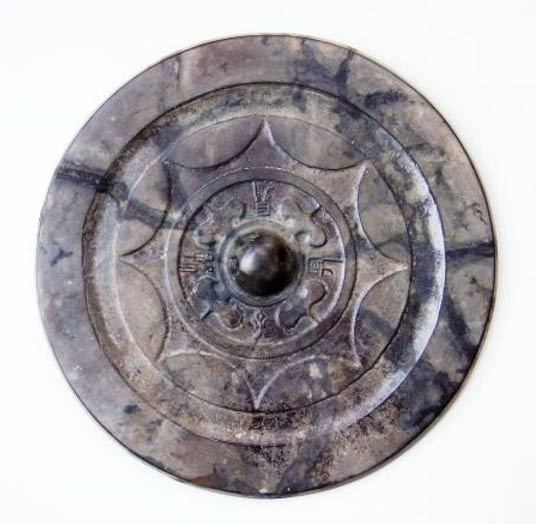
Ancient, 'Extremely Rare' 1,900-Year-Old Chinese Mirror Discovered Intact on Japanese Island
Archaeologists in Japan have unearthed a 1,900-year-old Chinese mirror that’s not only still intact, but well-preserved enough to still show a faint reflection. City officials in Fukuoka, the capital of the Japanese island where the mirror was found, said such a discovery is extremely rare, according to Japanese national newspaper the Asahi Shimbun.
The bronze mirror was found at the Nakashima archaeological site in Fukuoka’s Hakata Ward. It was made in China during the Later Han Dynasty, between 25 A.D. and 220 A.D., and measures about four and a half inches across. It’s possible that its unusually good condition owes to the region’s humid environment, which could have given it a degree of protection from oxidation, according to the Asahi Shimbun. Inscribed on the surface are the words “chang yi zisun,” which translates as “to benefit future generations forever,” according to the Asahi Shimbun.
“The find site is not a tomb, so the mirror may have been used in religious rites," Hidenori Okamura, a professor of Chinese archaeology at Kyoto University, said, according to the Asahi Shimbun. "The find will also serve as a material for precisely determining the shaky date of the late Yayoi period."
#bronze#mirror#artifact#china#chinese#later han dynasty#fukuoka#kyushu#japan#japanese#hakata#yayoi#archaelogy#yayoi period
13 notes
·
View notes
Photo
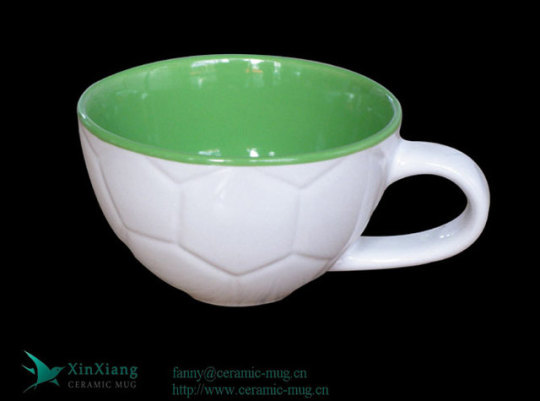
From Xinxiang Ceramic Mug Manufacture,The ancestors of Chaozhou had produced pottery eight thousand years ago; the Han and Jin Dynasties had produced a large number of pottery, and the Tang Dynasty had been able to produce exquisite pottery. Bijiashan Kiln Area is an important carrier of Chaozhou Culture. Chaozhou kiln was in its heyday in the Northern Song Dynasty. The export of Chaozhou porcelain coffee mugs in the Ming and Qing Dynasties and the early years of the Republic was in good condition. Chaozhou kiln produces pottery thousands of years earlier than Jingde kiln.
On April 12, 2004, China Light Industry Federation and Ceramic Industry Association awarded Chaozhou the title of "China Porcelain Capital". This paper makes a comparison with Jingdezhen in three aspects: the history of making ceramics in Chaozhou, the scale of production and export, and the international influence. It draws a conclusion that Chaozhou ceramics have profound historical and cultural connotations.
1. Beyond the cold at the beginning of Biwa: Chaozhou produced a large number of ceramics during the Han and Jin Dynasties.
In the introduction of "China Atlas Jiangxi Province" published by Map Publishing House, "Jingdezhen City is located on the Anhui-Jiangxi Railway Line in the northeastern part of the province. It has a history of more than 1,600 years. It is one of the four famous towns in ancient China. In the Song Dynasty, Jingdeming Kiln was famous all over the country because of its well-developed ceramic industry, and it is known as"Porcelain Capital". There are two mistakes in this introduction. Firstly, although Jingdezhen and Zhuxian Town, which Yuefei defeated the Jinbing, Jinhua Town, and Foshan Town, which are rich in ham and well-developed in foundry industry, are the four famous towns in China, they are not related to "ancient times" because they were called "Jingdezhen" only in the late Qing Dynasty. Because in the concept of history, the late Qing Dynasty belonged to modern times rather than ancient times. Secondly, there was no "Jingde famous kiln" in Song Dynasty. Jingde was one of the years when Zhao Heng (998-1021) reigned in Song Zhenzong. It lasted only four years, that is, from 1004 to 107. Legend has it that at that time in Fuliang County, Raozhou, Jiangxi Province, China began to produce porcelains, so the name of the town is Nian. Today, the city was formerly known as "Dachang", which was the official kiln site built in Xuande Dynasty of Ming Dynasty (from 1426). From the perspective of Archaeology and relics, Jingdezhen has a history of large-scale porcelain making for more than 600 years, which is 400 years slower than Chaozhou's large-scale export of porcelain in the reign of Shenzong Xining in the Northern Song Dynasty (from 1068). It is groundless to say that there were famous Jingdezhen kilns in the Song Dynasty.
Fuliang County was founded only in the reign of Tang Xianzong and Yuan Dynasty (beginning in 806), which was more than 200 years slower than that of Chaozhou in the eleventh year (591) of Emperor Wendi's Kaihuang in Sui Dynasty, and more than 1800 years slower than that of Haiyang in the first year (1050 BC). Fuliang County was famous for its tea production in Tang and Song Dynasties, and Bai Juyi (772-846, Zile Tian, Taiyuan people) was a great poet of Tang Dynasty in his later years. In the long poem Pipa Xing, there is also the sentence "Buy tea from Fuliang the day before yesterday". Raozhou (including Fuliang) in the Song Dynasty also had factories producing tea for the Royal family. The large-scale firing of porcelain must take soil and cut down trees as fuel, which seems to be impermissible under the regulations of the imperial tea garden. It can be seen that the Song Dynasty may not be able to produce a large number of firing porcelain in the tea production area of Fuliang.
In Chaozhou, it is generally believed that Xining and Yuanyou in the Northern Song Dynasty produced pottery in Bijiashan in the eastern part of the city (its kiln site was designated as a key cultural relic protection unit in Guangdong Province in September 1961 and found as a national key cultural relic protection unit), but from the archaeological discovery, the ancestors of Chaozhou had produced pottery eight thousand years ago. In 1993, thick gray rope-shaped pottery pieces were unearthed on the south wall of the new opening at the end of Xiangshan Mountain in Houzhai Town, Raoping County, South Australia. According to Professor Zeng Qian of Sun Yat-sen University, they were produced 8,000 years ago, while a large number of pottery fragments were unearthed at the Baiqiu sites of Chen Qiao and Chihu Village in the outskirts of Chaozhou City, proving that pottery had been produced in large quantities in the outskirts of Chaozhou City more than 4,000 years As Mr. Rao Zongyi put forward, pottery chips unearthed in Chaozhou belong to various regions, with multi-linen patterns... Ceramics in the northwest are rare, which is the main feature of Yue culture in the south. From the preface of Chaoshan Archaeological Collection, Emperor Liu Bangfengyue will be the Haiyang Marquis of 1,800 households in Chengyi in the sixth year of the Han Dynasty (201 BC). He or his descendants have built a royal platform on the west side of Lianyang River (the former Chaozhou ancient seaport) in the north of Chengcheng City. From the large number of tiles, tiles and tiles unearthed from the site, it can be seen that Chaozhou was able to burn high-grade buildings at that time. Material for multi-tier and multi-storey high-rise palaces, such as 35 cm long, 17 cm wide and 5 cm thick Chinese bricks and pots, ladles, dishes, salivary pots and other utensils, especially tile, such high-level building materials, can not be used for decoration in general residential buildings. Up to now, only three Han Dynasty buildings with tiles have been found in Guangdong. One is Yuewangtai on the 4th Zhongshan Road in Guangzhou City, the other is Changle Platform on the Xiongshishan Mountain in Wuhua, Meizhou, and the other is Guishan Site. The Changlestai site of Zhao Tuo, king of South Vietnam, is located in the upper reaches of the Meijiang River of the Han River. It is also possible that the building materials were fired in Chaozhou and shipped to Xiongshishan to build the platform. Because the tile of the platform is similar to Guishan but different from Yuewangtai in Guangzhou, it is also known that the pottery production in Chaozhou was very prosperous and developed as early as 2000 years ago. The green glazed pottery pots collected by Chaozhou Museum in the Han Dynasty are also evidence that Chaozhou in the Han Dynasty was able to produce pottery.
In the southern slope of Wushiling Mountain, Tangpu Village, Guihu Town, Chaoan County, there is a funeral Tomb of Emperor Xiaowu of Jin Dynasty in the eleventh year of Taiyuan (386). Porcelain bowls, ceramic pegs and ceramic spinning wheels are unearthed. Eight pieces of porcelain were also unearthed in the next year's tombs in Gushan, Chaoyang, including Pankou chicken head pot, porcelain sheep, pottery box and lid, four-ear pot, etc. There are also Jin Dynasty porcelain sheep and pottery pots in Jieyang Museum. Their embryonic quality is the same as the remains of Shangpu Ceramic Kiln in Chaozhou North Kiln. Because there are chronological bricks in these two Jin tombs, it can be proved that Chaozhou was able to produce porcelain in the Eastern Jin Dynasty more than 1600 years ago. It proves that the combination of Han and Vietnamese cultural exchanges has formed the embryonic form of Chaozhou culture.
0 notes
Text
A History of Chairs
A History of Chairs, Posture, and Society
It appears that since humans initial stood up to visualize over the tall Savannah grasses, we’ve been lookingfor an area to sit down backpedal. The historical paper isn't quite therefore concise, however—but once earlymigratory peoples initial settled down into a domesticated modus vivendi, it seems one mark of the civilized person was a seat that elevated the body “away from the cold, damp floor” (de Dampierre 2006). By thesimple act of constructing a man-made place to sit down, humans began the long tradition of distinguishing themselves from the animal world. it's a kind as easy because the bending of our knees and upright postureas our back, and nonetheless that kind isn't therefore easy.
Sitting at the Dawn of Civilization
archaeologic proof of sculptural relics at Neolithic building sites recommend chair and bench-likeareas, therefore it seems that chairs emerged throughout the Stone Age. however it's not sure at what purpose duringthe expanse of your time when the last geological period from concerning ten,000 B.C. to the dawn of civilization the first person crafted a seat with a back (or, or else, a straightforward platform with legs, sort of a stool) then sat down thereon(Crantz 1998). additionally, except for merely elevating humans, humans of elevated standing, in particular, have long been related to the first history of chairs.
The Ancient World
It is believed that humans appeared in China as so much back as forty,000 B.C., with comparatively dense population patterns apparent in Mongolia by twenty,000 B.C. Seats are found in Chinese tombs however appear strictly utilitarian, and styles stay comparatively unchanged through the sixteenth century, once a carpenter’s manual depicts standards of Chinese piece of furniture within the type of woodblock prints. Records recommend that thevast majority of “the earliest Chinese didn't use chairs, however instead knelt on the bottom, leaning back on their heels to support their weight.”The follow remained common through the tenth century and remains in use nowadays in some traditional settings in japanese Asia, wherever low cushions and mats area unitstill oftentimes wont to sit upon the ground (deDampierre 2006). Like different civilizations, the stool—and during this case a folding stool—is thought-about the oldest Chinese elevated “seat.” All said, there area unit many waysto sit down and lots of things upon that to sit down,but the seat with a back and (most frequently) four legs is usually the Western idea referred to as achair. One would like look no additional than ancient Egypt for the earliest living physical samples of the Western world’s use of chairs. Egyptian tombs that are unearthed contain chairs and stools from as so much back because the Egyptian previous Kingdom, concerning 2680 B.C., well preserved by Egypt’s dry air. The most
famous example dates to 1352 B.C.: the ornate throne sealed within the spot of Pharaoh of Egypt Pharaoh, or King Tut. There is, however, hieroglyphic proof of chair usage by all strata of society—though certainly not as pervasively as in fashionable society—dating back a minimum of to the third millennium B.C.(Crantz 1998). These early examples demonstrate basic carpentry ability, that bit by bit gave manner to advanced techniques in carpentry, together with subtle joints, veneering, ivory and precious metalinlays, and padding of nearly all accessible materials. Indeed, “Egyptian craftsmen…created the fundamentals of all seating piece of furniture,” together with folding piece of furniture (de Dampierre 2006).Early in their history, chairs were mostly employed byhigher strata of society, significantly within the type of thrones—so the easier, backless version of the chair,the stool,was the first seat of lower strata.Domestic piece of furniture just like the low-profile, rectangular-framed stools of ancient Egypt were “formed with adouble cove construction of bowed wood slats…which tolerate holes within the frame” (deDampierre 2006).Outside of Egypt, stelae from the Euphrates River vale in geographic regiondepict the usage of chairs,particularly by kings, however Galen Crantz suggests the additional wet climate prevented any wood or rush-based chairs from living. The archaeological record from the opposite nice early civilization across the Mediterranean—Greece and also the Cyclades Islands—is equally thin, broken by devastating earthquakes and fires that noncontinuous and resettled entire civilizations. Few living items of artistry depict easy stools from the second millennium B.C., tho' the primary cultures appeared in Ellas asmuch as cardinal years earlier. when a five-century gap within the archaeological record, paintings and sculpture ranging from concerning the seventh century B.C. are unearthed that show associate degree evolution of style leading to abundant more sophisticated piece of furniture. because the culture evolved, Greek society’s target kind, rhythm, precision, clarity,and proportion worked its manner into all aspects of life, together with piece of furniture. Chairs, stools, and benches served all levels of society, a truth created evident by their living art and, additional significantly, their literature (de Dampierre 2006).
See a video about History of chair
Read more about History about chairs
0 notes
Photo

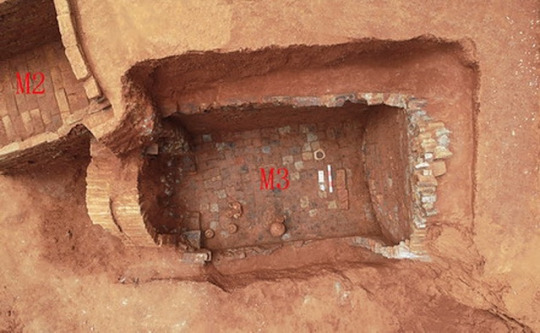

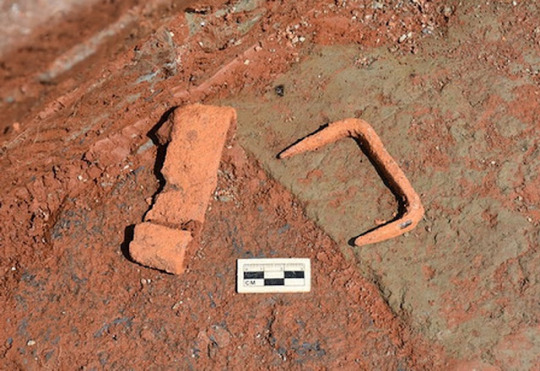
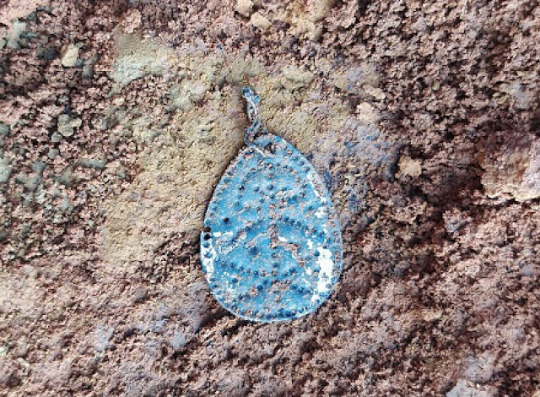
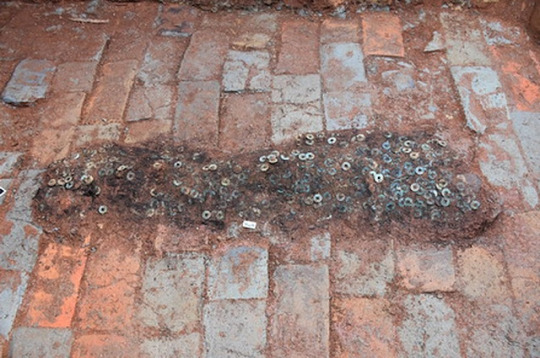



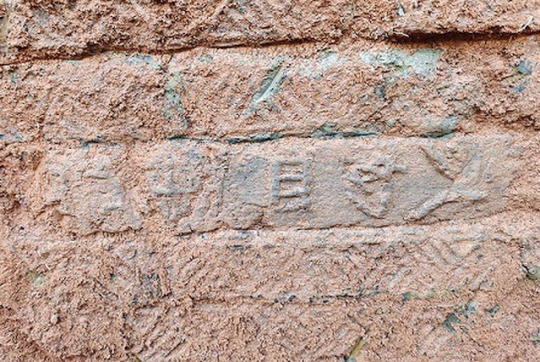
Four Ancient Tombs Unearthed In China
Chinese archaeologists have discovered a number of objects from four tombs dating back 1,900 years in central China's Hunan Province, the provincial cultural relics and archaeology institute said on Saturday.
The tombs are located in Guiyang County. Unearthed objects include 81 pieces of pottery, ironware, glassware, silverware and bronzeware.
Based on the inscription on one of the tombs and the characteristics of the unearthed objects, the archaeologists believe the tombs are from a time from the mid-Eastern Han Dynasty (25-220) to the Three Kingdoms Period (220-280), about 1,700 to 1,900 years ago.
Accessories including pendants, glassware and silver earrings that were found in two tombs indicate that the tomb owners were likely women, the archaeologists said.
"The discoveries are of great importance to the study of the funeral customs, economy, culture and social development from the Eastern Han Dynasty to the Three Kingdoms Period in southern Hunan," said institute staffer Chen Bin.
#Four Ancient Tombs Unearthed In China#China's Hunan Province#Guiyang County#Mid-Eastern Han Dynasty#Three Kingdoms Period#archeology#history#history news#ancient culture#ancient civilizations#ancient grave
21 notes
·
View notes
Text
Rare ground-painting found in ancient Chinese tomb
SHENYANG, Jan. 16 (Xinhua) -- A rare ground-painting has been found in a noble tomb in northeast China's Liaoning Province, local archaeological authorities said Wednesday.
The Hongjiajie graveyard in Futun Village in the city of Jinzhou was found in 2014 after it had been robbed. Excavation work on the tomb started in April 2015, according to the provincial cultural relics and archaeological institute.
So far, four tombs have been unearthed and are believed to date back to the Liao Dynasty (916-1125). A series of utensils, including ceramics, woodware, jadeware, stoneware and silk fabrics were also unearthed. Read more.
46 notes
·
View notes
Text
Ancient tombs discovered in southwest China
Ancient tombs discovered in southwest #China
Archaeologists discovered four tombs dating back more than 2,000 years in southwest China’s Sichuan Province, according to the Sichuan Provincial Cultural Relics and Archaeology Research Institute.
The tombs, dating back to the Warring States Period (475-221 BC), were unearthed in Qu County in the province.
The largest tomb was 7.9 meters long, 1.8 meters wide and 1.6 meters deep, where more…
View On WordPress
0 notes
Text
Chinese embroidery
Chinese embroidery
As one of China's outstanding traditional national crafts, Embroidery is inseparable from silk reeling and silkworm breeding, thus, embroidery is also known as silk embroidery. China was the earliest country in the world to find and use silk, and Chinese started silk reeling and silkworm breeding four or five thousand years ago. With the use of silk, the production and development of silk fabrics, embroidery techniques also sprang up gradually. According to the book “Shang Shu” , it is stipulated in the chapter clothing system of pre-4000 that“something would be embroidered on the clothing and skirt”. The trend of advocating embroidery and apparel in the Song Dynasty has gradually gained widespread popularity among the people, which has also contributed to the development of the silk embroidery process in China.
Gu embroidery of Shanghai Lu Xiang Park is the most famous embroidery at the time. Gu's family , ancestral embroidery and reputation of embroidery are famous anywhere, and got the court's appreciation. In the Qing Dynasty, Gu embroidery was already not only shocked at home, but also renowned overseas, which has attracted large number of foreign businessmen to come to Shanghai for purchasing.
Nowadays, Chinese embroidery process is seen almost all over the country. Suzhou embroidery in Suzhou, Hunan embroidery in Hunan, Sichuan embroidery in Sichuan and Guangdong embroidery in Guangdong have their own unique characteristics. They are honored as the four famous embroiders in China. Up to now, it has developed into embroidery crafts that embroidery process is meticulous and complicated. For example, double-sided embroidery "cat" is one of the representative works of Suzhou embroidery. The artists divide a hair-sized embroidery thread into one-half, one-fourth, and one-twelfth, forty-eighth, thin embroidery lines, and store tens of thousands of threads and knots without a trace. No matter from the front or the back, you can see a playful look of kitten. For the embroidered Cat, the most difficult part is the pair of cat eyes. Artistes need to use more than 20 kinds of colors of silk thread to make cat embroidery bright, and lifelike. So far, on the basis of double-sided embroidery, it has developed into a double-sided different color embroidery, opening up a new way for the embroidery process. Ordinary embroidery daily necessities, such as being the face, pillowcases, cushions, vamps and the like, many Chinese folk can be embroidered, which promote the popularization of embroidery technology.
In 1958, embroidered articles of dragon and phoenix patterns were unearthed in the tomb of Chu in Changsha, China, which was an embroidery of China more than 2,000 years ago in the ancient Warring States Period. It is one of the earliest embroidery objects that China has found by now.
The embroidery of ancient China was not sold in the international art market for a long time and the price was flat. Until 1993 in Hong Kong, Singapore and other places, some people began to collect embroidery crafts. According to the inference of market analysts, it still need collectors 10 years of hard work to make embroidery a new favorite in the international market. And in the past two years at some domestic art auctions, the price of embroidery items has been soaring, which is very attractive to buyers.
Shangfei’s general business projects: wedding etiquette services, arts and cultural exchange activities, stage art modeling, meeting conference services, corporate image planning, brand marketing, exhibition services, marketing planning, business management consulting, business information consulting.
0 notes